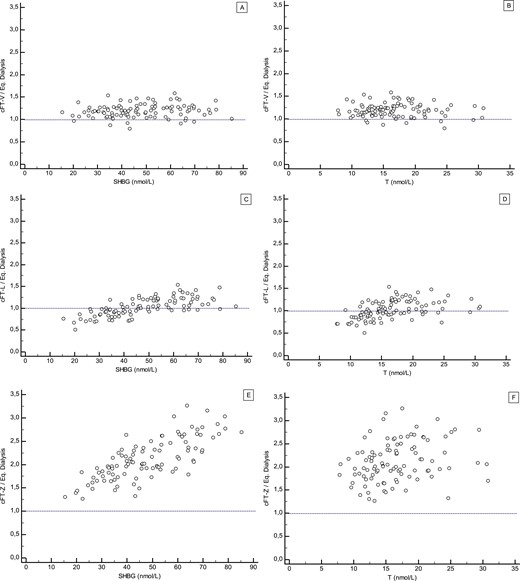madman
Super Moderator
ASSESSMENT OF MALE ANDROGEN STATUS: A SURVEY ON MEASUREMENT AND REPORTING OF TOTAL TESTOSTERONE, SEX HORMONE-BINDING GLOBULIN AND FREE TESTOSTERONE IN CLINICAL LABORATORIES ACROSS EUROPE
N.Narinx, J. A. Nyamaah, K. David, V. Sommers, J. Walravens, T. Fiers, B. Lapauw, B. Decallonne, F. Claessens, J. Billen,P. Vermeersch, D. Vanderschueren, L. Antonio
1Laboratory of Clinical and Experimental Endocrinology, KU Leuven, Leuven, Belgium,
2Laboratory of Molecular Endocrinology, KU Leuven, Leuven, Belgium,
3Department of Internal Medicine and Pediatrics, UZ Gent, Ghent, Belgium,
4Department of Laboratory Medicine, UZ Gent, Ghent, Belgium,
5Department of Laboratory Medicine, UZ Leuven, Leuven,Belgium
Objectives
Standardization for biochemical assessment of suspected hypogonadism is lacking, leading to methodological inconsistencies between clinical laboratories and varying reference ranges, warranting careful interpretation by clinicians This survey investigated methodological differences regarding biochemical assessment of androgens in men, focusing on total testosterone (T), sex hormone-binding globulin (SHBG) and free T, in clinical laboratories throughout Europe.
Methods
An internet-based survey was distributed from December 2022 till December 2023 by the Royal Belgian Society for Laboratory Medicine (RBSLM), the Dutch Association for Clinical Chemistry and Laboratory Medicine (NVKC), the European Academy for Andrology (EAA), the European Federation for Laboratory Medicine (EFLM), the European Society for Sexual Medicine (ESSM) and Andronet. Additionally, all Belgian clinical laboratories were directly contacted by email. Survey topics included sampling, methodology, reference ranges and reporting.
Results
A total of 124 unique records were analyzed, representing clinical laboratories from 27 different European countries. For total T, only 43.0% (52/122) recommended a sampling time, even fewer recommended sampling in a fasting state (25.4%, 31/122). Total T was quantified by enzyme-linked immunoassay (IA) (72.7%, 88/121), mass spectrometry (MS) (8.3%, 10/121), radioimmunoassay (RIA) (1.7%, 2/121), or a combination (17.3%, 21/121). Age-stratified total T reference ranges were used by most laboratories (IA: 79.0% [74/94] vs MS: 70.8% [17/24]) with IA reference ranges often supplied by the assay manufacturer (70.8%, 63/89), while MS reference ranges were often in-house developed (42.9%, 9/21). SHBG quantification was uniformly performed by IA, with age-stratified reference ranges (65.0%, 52/80), mainly provided by the assay manufacturer (83.1%, 64/78). Free T was used by 69.0% (66/95) of laboratories, either through calculation (cFT, 79.3%, 46/58) or measurement (mFT, 10.3%, 6/58) or a combination (10.3%, 6/58). cFT was predominantly calculated with the Vermeulen formula (84.2%, 48/57). mFT was assessed by direct IA/RIA (60.0%, 6/10 and 20.0%, 2/10) or MS after equilibrium dialysis or liquid-liquid extraction(20.0%, 2/10).
Conclusion
This survey highlights methodologic variability in assessing androgen status, suggesting inconsistent adherence to clinical guidelines. It emphasizes the need for harmonization, the adoption of age-specific reference ranges and, specifically for free T, standardized methods.













